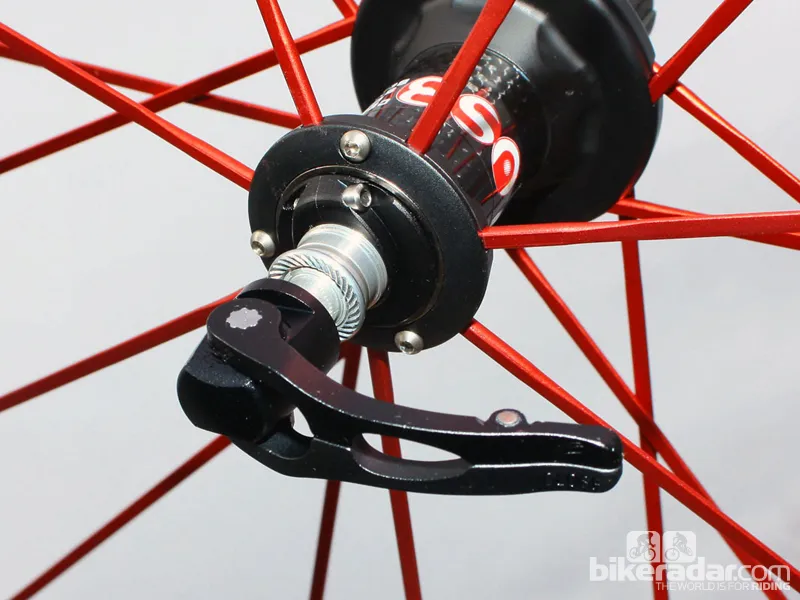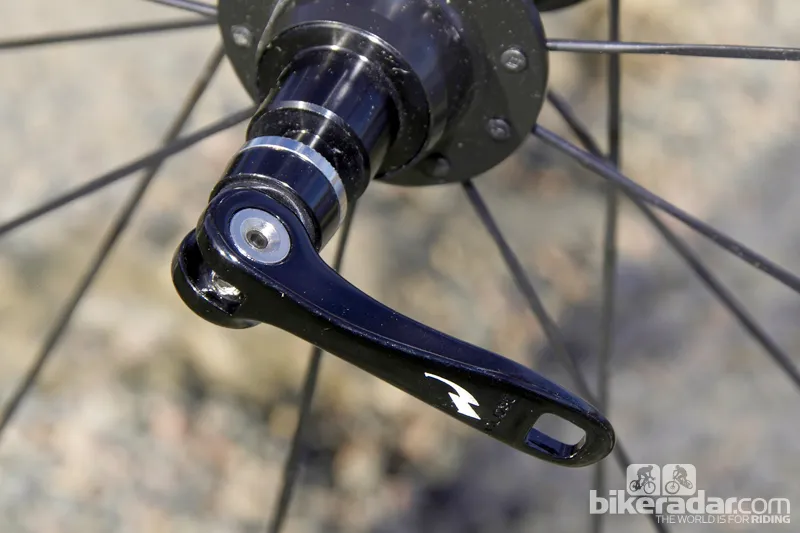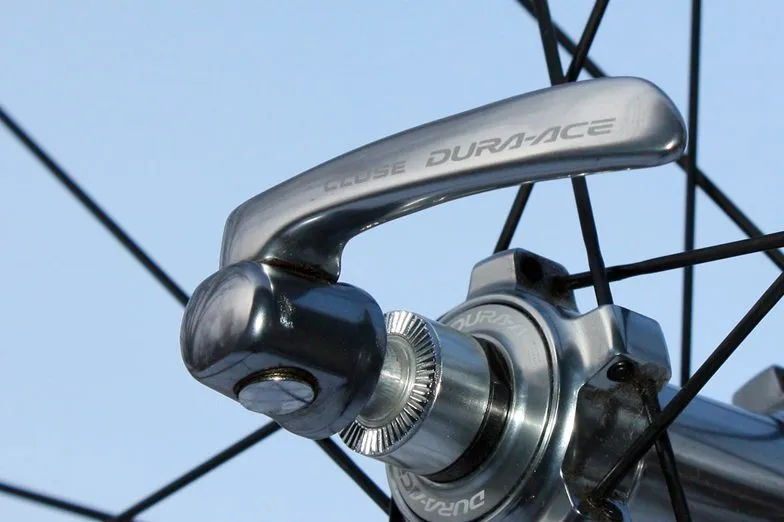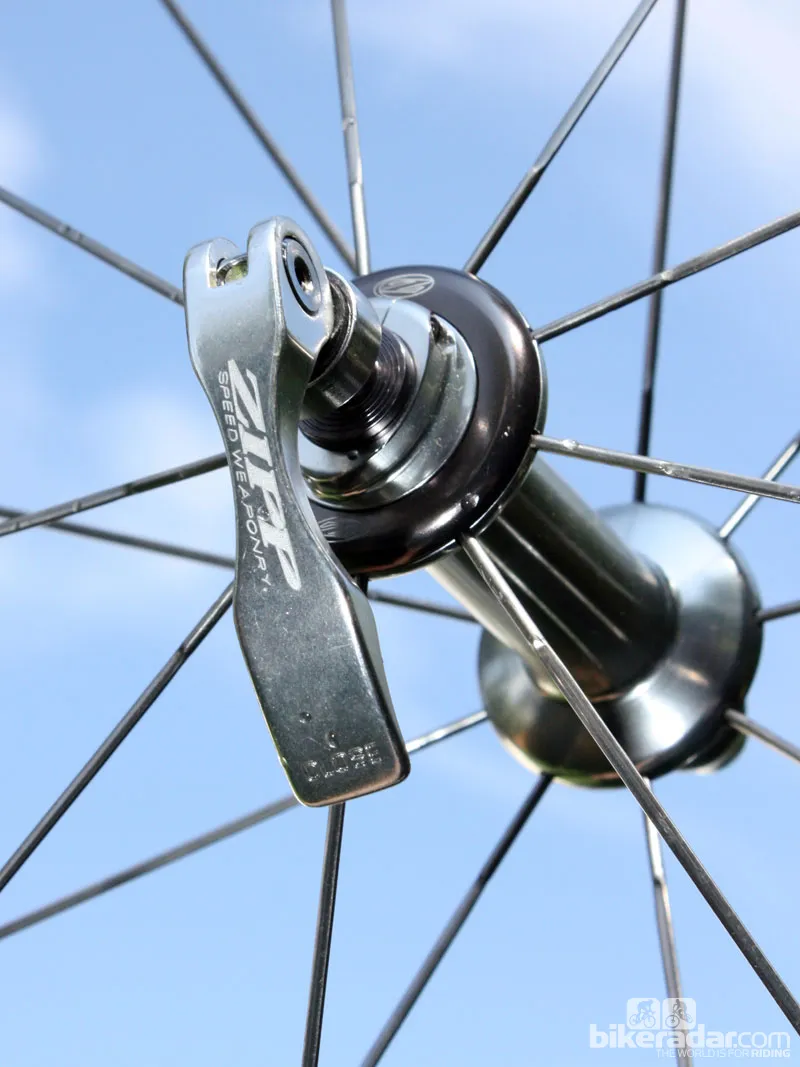Most of you have used a quick-release skewer – hopefully correctly – at some point in your cycling life. Save for some of the younger cyclists among us, you've perhaps also noticed that many of the newer ones have grown harder to use, too. Simply put, many modern quick-release skewers just flat-out suck.
Much as I wholeheartedly embrace the move to thru-axles, much of the problem isn't with the idea of quick-release skewers themselves. The fact that classic designs have changed little since Tullio Campagnolo first developed the concept more than 80 years ago is strong testament to just how well the idea works.How often do you see top professionals' wheels just fall off? Yeah, that's what I thought.
Older quick-release skewers were almost all made of steel with internal cams tucked away inside metal caps. The small-diameter cams and metal-on-metal contact generated lots of clamping force with minimal friction inside the mechanism itself.
The CNC-fueled aftermarket craze of the early 1990s upended the apple cart, though, with aluminum construction and external-type cams that were lighter and more colorful. Companies such as Salsa and Hope admittedly did it pretty well, too, with big, sturdy, precision-machined aluminum bits and either Delrin or brass cam seats that minimized the design's inherent increase in friction.
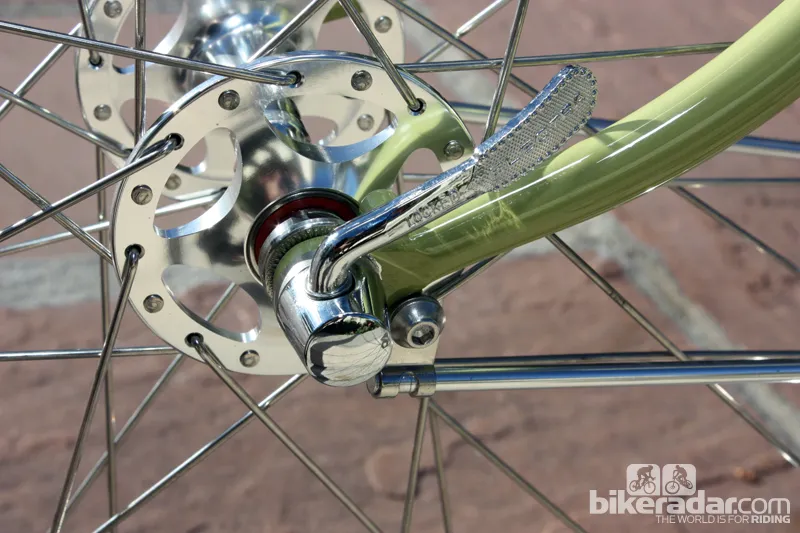
Old-school skewers are a bit heavy, but most of them work well
The problem came about when companies tried replicating the design at costs that were more suitable to mass production. Flimsy and crudely formed cast arms were used instead of machined ones, soft plastic seats instead of Delrin or brass. These are still lighter than steel, mind you, but they sure don't work as well – and seemingly everyone jumped on board the SS Craptanic.
Try this if you have a set of newer, external-type skewers: remove and reinstall the wheel as you normally would. Then, remove it again but before you put it back on, apply a drop of oil on the interface between the cam and the washer, and another on the barrel pivot. Now reinstall the wheel. Is there a big difference?
If so, do yourself a favor: throw the wretched things away, and get something that actually works lest your Match.com profile includes "getting dental implants" as one of your favorite pastimes.
Some of my personal mainstream favorites include Shimano, Campagnolo and upper-end Mavic skewers, all of which operate smoothly and develop lots of clamping force. It's worth noting that Shimano and Campagnolo have never strayed from internal-type skewers.
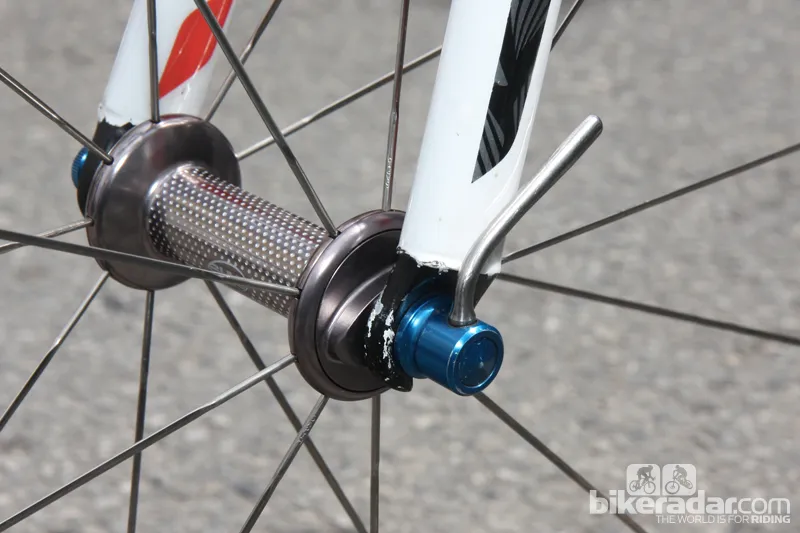
Even pro riders who are obsessive about weight use internal-type skewers. This is Alberto Contador's front skewer
Long-time external-cam proponent Bontrager has recently moved back to an internal-type skewer design, too, and it's a huge improvement. Even SRAM and Zipp have at least switched to a far more functional spherical-type pivot and brass washers. Kudos to all of the above. There are certainly others that work well but it would be impractical to list all of them here.
I'm as much a weight weenie as anyone and certainly am no stranger to blinging out a ride with matching anodized aluminum bits. However, there comes a time when function shouldn't be sacrificed for form, and in this case, the lure of a pretty skewer shouldn't trump the ability to properly do its job.
James Huang has been writing about bicycle tech since 2005 and has more than 14 years of experience as a shop mechanic. In that time he's seen plenty of fantastic gear and technology but also a lot of things that have just flat-out pissed him off. Follow the AngryAsian on Twitter at @angryasian, and check BikeRadar for more of his columns, which run every other Tuesday.

